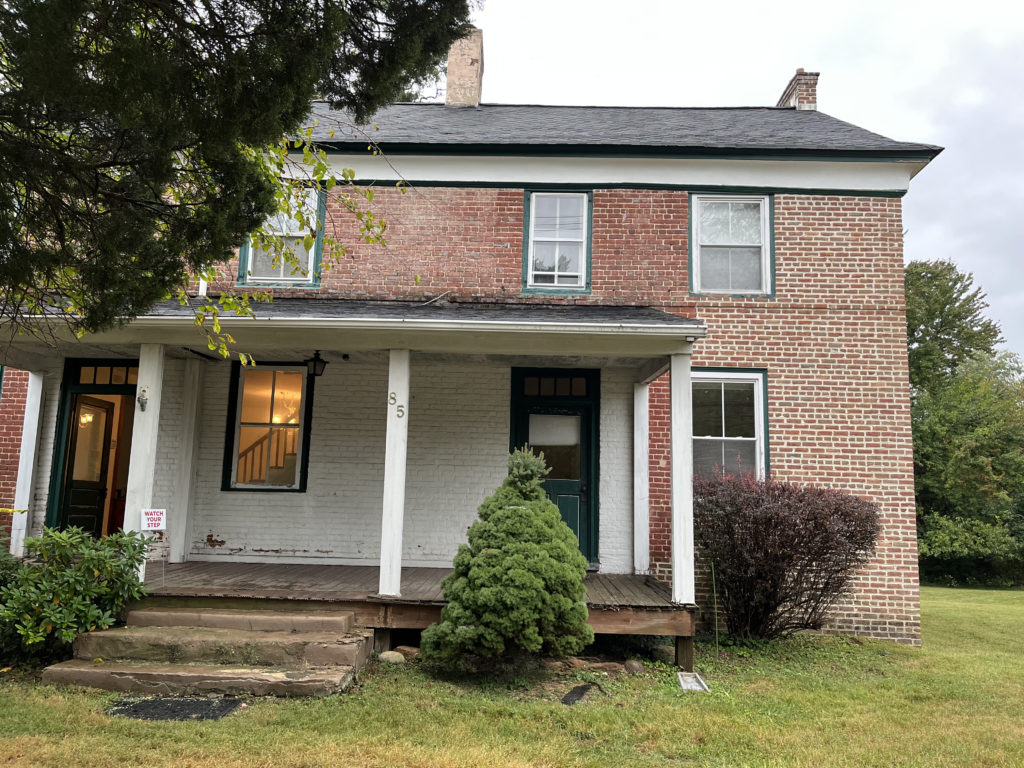
The township’s Revolutionary Era Historic House Tour, presented by Saving Historic Moorestown and the Historical Society of Moorestown, was an opportunity for residents to see 12 houses on Sept. 25 that were standing during the Revolutionary War.
Only eight houses could be seen inside, but the tour served to further the historical society and Saving Historic Moorestown’s shared missions to promote history and preserve landmarks.
The sites included the Cowperthwaite house, circa 1732; the French-Hollinshead house, circa 1695; the Richard Flemming house, circa 1775; the Smith-Cadbury Mansion, circa 1738 (home to the historical society); the Friends Meeting house, circa 1802; the Samuel Haines house, circa 1756; the Hessian house, circa 1735; the Joshua Bispham house, circa 1720; the Richards Edwards house, circa 1783; the Hugh Hollinshead house, circa 1770; and the Commodore Truxtun/Bispham/Walton house, c. 1730.
To receive a guide of the designated tour sites, visitors met at the recreated Moore’s Tavern, built in 1734, at its original location on Main and Union streets.
“It’s a great way to raise awareness of our history,” said historical society trustee Stephanie Herz. “We are really trying to raise awareness through an event like this where people can see, ‘Oh, that house was here during the American Revolution? That is so cool.’ When they go on the tour and they can go inside, they can see that you can have a historic home and make it beautiful and modern inside.
“That’s a big deal, when people can do that. It’s possible and it should be done.”
Upon arriving at each site, participants scanned a QR code for access to its story as well as photos and a history. The Richard Flemming house is a contributing property in the Moorestown Historic District listed on the National and State Historic Registers. The oldest portion of the house was built in 1775 by Fleming.
In 1801, the home was sold by Thomas Bispham to chairmaker William McElroy, who was and is a noted New Jersey chairmaker. Many of his well-constructed chairs survive to this day and are sought after by collectors of early-American furniture. A stamped McElroy chair is on display at the Smith-Cadbury Mansion.

The Thomas Cowperthwaite house would have been one of the first that British troops encountered as they marched from Haddonfield up Kings Highway toward Moorestown.
According to oral tradition, the Hessian house, built by Joshua Bispham, was occupied on the night of June 20, 1778, when Hessian soldiers were evacuating from Philadelphia with the British army. Although the house has been changed and renovated many times, it started out with a simple plan around the mid-1700s: two rooms on the first floor and two on the second. Rather than stairs to the second floor, it’s believed that a ladder was used to access the sleeping quarters through an opening in the floor of one of the bedrooms.
The Joshua Bispham house, built in the 18th century by Bispham, was said to have been a reluctant host to Hessian soldiers in June of 1778, when the British were evacuating from Philadelphia. The walls of the house consisted of two layers of bricks with straw and mud between them for insulation and plaster over the bricks. The house has been added onto and remodeled many times over the years.
The French-Hollinshead house is believed to be the oldest still standing in Moorestown. Once the centerpiece of a 300-acre farm, it was constructed in three sections, the oldest of which was built by Thomas French Jr. Some original interior features survive to this day and the property remained in the French family until 1837.
The farm was acquired by Elwood Hollinshead and became known as Forest Brook in 1858. It remained in that family until 1965, although it began to subdivide the acreage for development in 1914.
The Thomas Cowperthwaite house, built on the corner of Kings Highway and Lenola Road by Cowperthwaite, would have been one of the first that British troops encountered as they marched from Haddonfield up Kings Highway toward Moorestown.
The brick exterior is laid in common bond on the front and back elevations, and in Flemish bond on the southwest end. When Cowperthwaite passed the house onto his son Job in 1771, it was on a plantation of some 250 acres.
The oldest portion of the Hugh Hollinshead house was built by Hollinshead, a clock maker, cousin to another Moorestown clock maker, Morgan Hollinshead, whose shop – now demolished – was located on Main Street in front of where the Friends Meeting house is now located.









